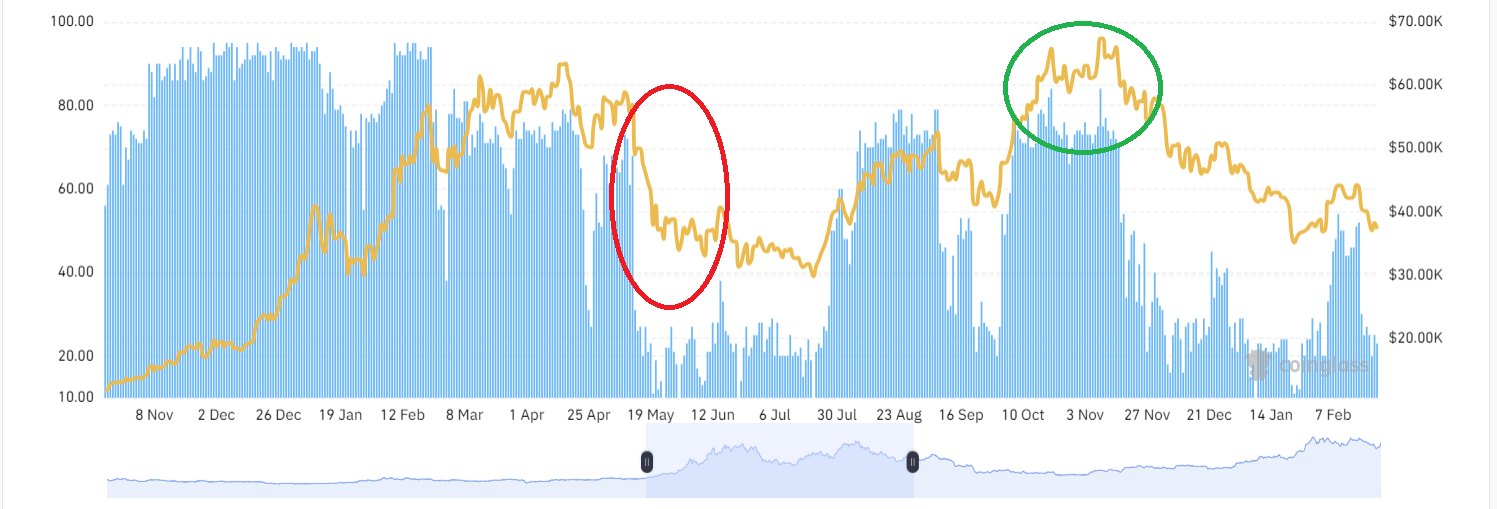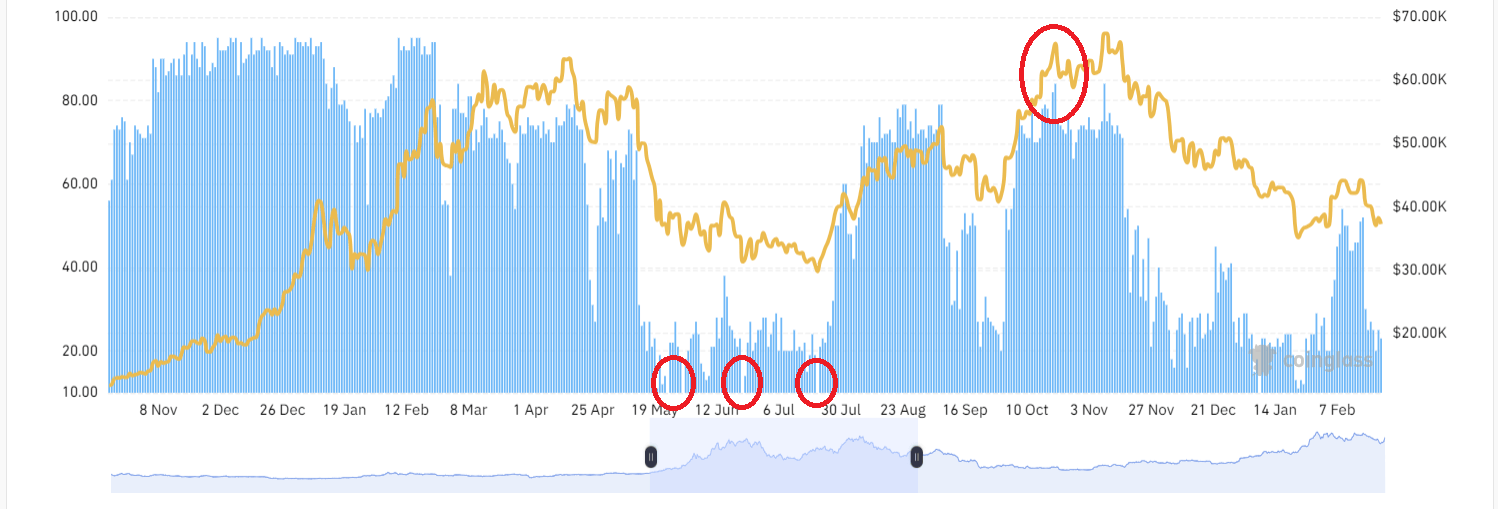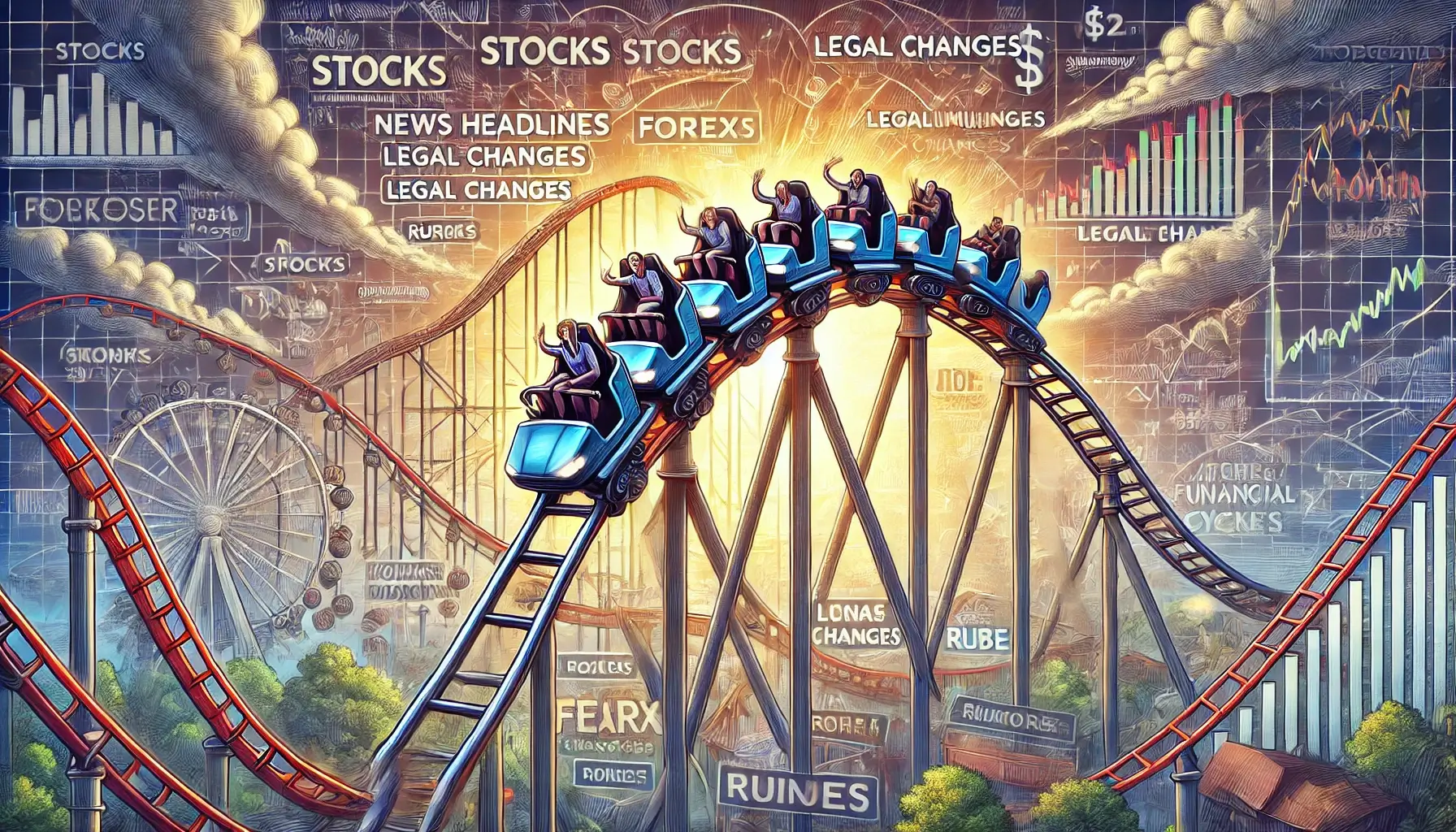Imagine you're at an amusement park, standing in line for a roller coaster. As the ride begins, the car climbs slowly to great heights, and then suddenly plunges back down at breakneck speed. The feelings of anticipation and fear are palpable. This roller coaster ride is a lot like the financial markets: sometimes they're climbing high, tempting traders with greed, and other times they're plunging down, filled with fear.
Financial markets, whether they're stocks, forex, commodities, or cryptocurrencies, move in cycles. They rise, stay flat, or fall. These cycles can be influenced by news, legal changes, or even rumors. We have discussed cycles and ATH, ATL made by them here. But regardless of the cause, these cycles always reflect two emotions in the market: fear and greed.
Understanding the Fear and Greed Index in Crypto
The Fear and Greed Index is a tool used to gauge the emotions of traders in the cryptocurrency market, specifically Bitcoin. This index ranges from 0 to 100. A score from 0 to 25 indicates extreme fear, 25 to 50 shows fear, 50 to 75 represents greed, and 75 to 100 indicates extreme greed. Some platforms consider a score around 50 as neutral.
[caption id="attachment_8573" align="alignnone" width="1493"] Fear and Greed Index[/caption]
Fear and Greed Index[/caption]
When greed is high, and the index is high, more people are eager to invest. Unfortunately, many investors try to jump on the bandwagon, buying at high prices and driving prices even higher. Conversely, when the index is low, indicating fear, most people are fleeing the market, selling off their assets at a loss. Large investors, known as whales, often take advantage of these situations by buying during times of fear and selling during times of greed. This buying during fear is called "accumulation," and selling during greed is called "distribution."
Impact of News on Market Sentiment
Positive or negative news significantly influences market sentiment and direction. Good news, like legal approvals or major partnerships, creates positive sentiment, leading to more buying and pushing the Fear and Greed Index up. On the other hand, bad news, like government crackdowns, instills fear, causing the index to drop.
Examples of Greed-Driven and Fear-Driven News
In October 2021, the approval of Bitcoin futures ETFs in the U.S. pushed Bitcoin's price above $66,000, with the Fear and Greed Index hitting 84. Investors rushed to buy, driving Bitcoin on Binance to an all-time high of $69,000. However, highs driven by greed are often temporary, and prices soon began to decline.
Conversely, in May 2021, China's ban on crypto trading and mining led to a sharp price crash in Bitcoin, spreading fear across the market and dropping the Fear and Greed Index to 10. Although the market recovered in a few months, this event highlighted the impact of negative news on market sentiment.

Not Every News Has an Impact
We've explained the effects of news on the market in detail in this article. However, it's important to remember that not every positive or negative news affects the market. In such cases, the Fear and Greed Index also shows no significant change. Here are some scenarios where news might not have an impact:
- Priced In: Sometimes investors expect the news beforehand and have already made their buying or selling decisions. In this case, the news only confirms their expectations, and its impact is very limited. This is known as the news being "priced in." For example, the 2024 Bitcoin halving news had already created a high in the market well before the actual halving occurred.
- Repeated News: If the same type of news is seen repeatedly, its impact diminishes. When the U.S. Securities and Exchange Commission (SEC) initially banned Ripple (XRP), it had a significant effect. However, as the SEC continued to take similar actions against different coins, the market impact gradually lessened.
- Counteracting Sentiment: Sometimes, the market is experiencing strong emotions. For instance, if the market is in a state of extreme greed and a not-so-significant negative news item appears, its impact is quickly neutralized, and the market continues on its path.
What are "Paper Hands" and "Diamond Hands"?
When discussing the Fear and Greed Index, it's essential to understand two other terms in the crypto market: "Paper Hands" and "Diamond Hands."
Paper Hands refer to traders who can't handle any market pressure. As soon as there is any sign of trouble, they sell off their assets, often adding to the market's fear and typically incurring losses. These traders are also known as "panic sellers."
Diamond Hands are those who take a long-term view and make decisions accordingly. They do not sell during periods of fear and sometimes even buy during these times. They usually benefit from the market in the long run by holding onto their investments.
Limitations of the Fear and Greed Index
Like any indicator, the Fear and Greed Index has its limitations. It moves with Bitcoin's price and shows whether the market is in fear or greed after the movement has occurred. When the market drops sharply, the index also drops but then recovers with a short-term market recovery. When the market drops again, the index shows fear once more, even if the price is lower than before.
For example, on May 24, 2021, Bitcoin's price was around $35,600, and the Fear and Greed Index was 10. The price recovered afterward, but on June 22, 2021, the price was around $31,300, and the index was again 10. Later, on July 29, 2021, the price was around $29,775, and the index was still 10. This shows that the index does not give perfect results, much like other indicators. Its job is to indicate fear and greed, not predict price movements.

Therefore, when using this index for long-term purposes, it should be used alongside other fundamental factors and macroeconomic conditions.
Controlling Emotions in the Crypto Market
Given the rapid changes in the crypto market, controlling emotions is more crucial here than in any other market. Here are some tips to help you manage your emotions in an environment filled with fear and greed:
- Stick to Your Plan: Develop a strategy before you start trading and stick to it, no matter the market conditions. This minimizes the impact of fear or greed. Proper risk management is also essential.
- Diversify: Spread your investments across multiple cryptocurrencies to reduce risk and stay somewhat protected during rapid changes. You can also use coins backed by gold, like XAUT and PAXG. If you are Muslim, you can check their Shariah compliance on the Shariah Analysis dashboard.
- Critically Analyze Information: Information is good, and knowing the news can be beneficial, but not every piece of news has an impact. So, view news critically. Sometimes news that seems bad may not be in reality. For example, when Binance's former CEO Changpeng Zhao (CZ) was forced to step down, many thought it would affect BNB, but it was a neutral event with no long-term impact.
- Avoid Herd Mentality: What is everyone else doing? You don't need to care about that. It's not necessary that everyone is correct. Do your own analysis and firmly stick to your plans.
Summary
The Fear and Greed Index provides crucial information about the emotional state of the market. It helps investors and traders understand the market's rapid movements and make decisions accordingly. By understanding how news impacts market sentiment, traders can make stronger and more informed decisions. However, it's essential to remember that this index, like other indicators, is not perfect, so it should be used alongside other research and tools.
Key Takeaways
- Understanding Market Emotions: The Fear and Greed Index helps gauge market sentiment by indicating whether the market is driven by fear (low scores) or greed (high scores). This insight can guide investment decisions.
- Impact of News: Positive news, such as regulatory approvals or major partnerships, can boost market sentiment and drive prices up, while negative news, like government crackdowns, can instill fear and cause prices to drop.
- Greed and Fear Cycles: Financial markets, including cryptocurrencies, operate in cycles of greed and fear. Recognizing these cycles helps investors understand market fluctuations and make more informed decisions.
- Paper Hands vs. Diamond Hands: "Paper hands" refers to investors who panic and sell at the first sign of trouble, often incurring losses. "Diamond hands" are those who hold onto their investments during downturns, aiming for long-term gains.
- Index Limitations: The Fear and Greed Index reflects market sentiment based on past price movements. While it provides valuable insights, it should be used alongside other research and indicators for a more comprehensive analysis.
- Emotion Management: Managing emotions is crucial in the volatile crypto market. Sticking to a well-thought-out plan, diversifying investments, critically analyzing news, and avoiding herd mentality are key strategies for success.

